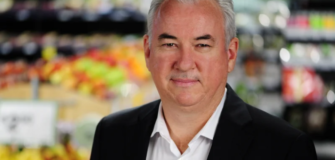VTA: Loading zone shortage undermines COVID recovery in Melbourne
Share

The Victorian Transport Association said loading zones in the Melbourne CBD have significantly declined over the past two years, prompting complaints from members that deliver goods to retailers and fresh food, groceries and beverages to city bars and cafes.
The group said that fewer CBD loading zones are creating traffic congestion and threatening Melbourne’s economic recovery from forced business closures.
“After 12 months of lost business and revenue, CBD businesses are finally getting back on their feet and servicing a steadily growing market of consumers as more people return to the city for work, yet we are hearing about deliveries having to be rescheduled or taking longer because there are fewer loading zones,” said Peter Anderson, CEO, VTA.
“This is creating a dangerous environment where drivers are having to wait to make deliveries or drive around the city until a loading zone becomes available, which increases traffic congestion and associated delays for everyone,” Anderson explained.
VTA said that dozens of transport companies make thousands of trips in and out of the CBD for deliveries every day. Any delay inconveniences customers and consumers and contributes to lost productivity.
“We have one member that currently has around 200 drivers a day entering the CBD to make deliveries, saying that the time for them to do this has doubled in the last five years,” Anderson said.
“The issue is being compounded every year with loading zones being reduced, forcing drivers to wait around longer to get a loading zone or park further away, which means that they are having to cart freight on trolleys a further distance, risking an incident or injury to a pedestrian or driver.”
Anderson said nearly 40 kilometres of kerbside protected bike lanes built by the City of Melbourne and Victorian Government during COVID lockdowns was clearly a factor in greater congestion and fewer loading zones to service shops, restaurants and other businesses.
“Without any consultation with industry, bike lanes were built in Swanston Street, William Street, Bourke Street, Exhibition Street, Flinders Street, La Trobe Street and elsewhere in the city, with lanes and protection medians encroaching on loading zones and other parking and delivery infrastructure,”
he said.
He continued that while they appreciate the need to protect cyclists, a consequence of these decisions has been a blowout in delivery times, which increases the number of trucks and delivery vehicles in the city.
“The City of Melbourne is responsible for designating and enforcing loading zones and if they really want to support business recovery it is essential that more zones – not less – be set aside for transport operators to service their customers safely, quickly and efficiently,” he concluded.
Source: VTA













